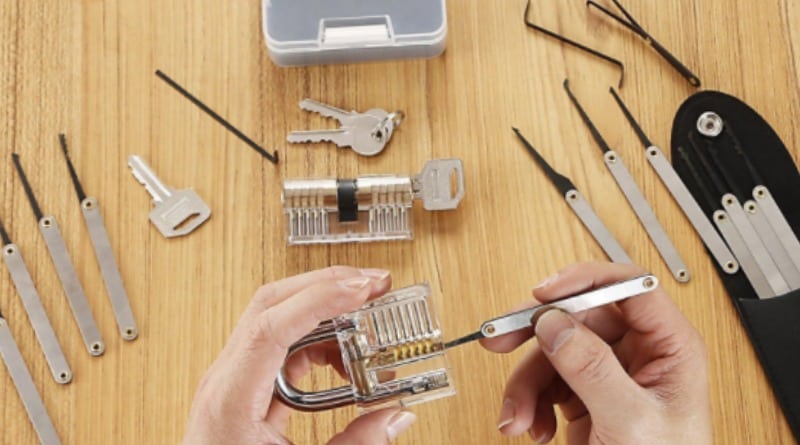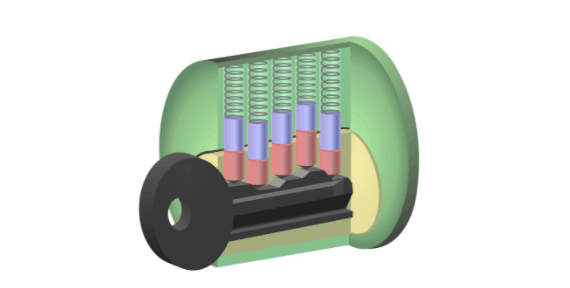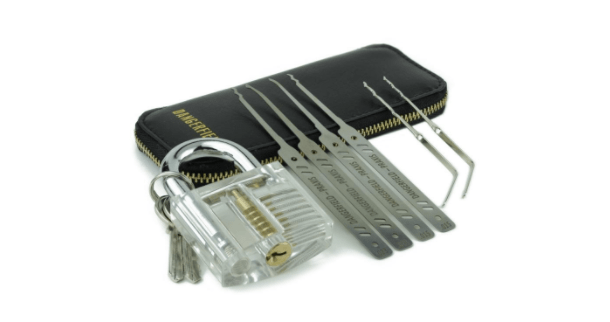Beginner’s Guide to Lock Picking

Lock picking has often been thought of as requiring some intense concentration and skill – which is mostly true, but it doesn’t exactly necessitate a Zen-like focus. There are quite a number of lock variations, which can contribute to the notion that lock picking is simply too complex for the common folk. But the fact is, lock picking and its techniques can be learned and easily applied within a couple of hours.
Have you ever wanted to learn how to pick locks, even just for your own personal amusement? Well, here’s what you’ll need to know to get started:
Why learn to lock pick?
There are a number of reasons why you should learn to lock pick; not only is it cool and fun to learn how to win against locks, it’s a skill that can also come in handy during emergencies. If you’ve ever accidentally left your keys at home or locked yourself out of your car, you know just how frustrating it is to be stopped by a flimsy lock.
Learning how to pick locks can also be an eye-opening journey. It makes you realize how locks are mere illusions of security that can be shattered by a skilled (or even a newbie) lock picker. It makes you appreciate the feeling of safety that it provides you, but also lets you prepare other means of keeping yourself, your family, and your possessions safe.
Brief history of lock picking
Lock picking as a pursuit is as old as the lock itself. All throughout history, the feeling of absolute safety – or the idea that no one would be able to get to any possession you hide under lock and key – only lasted for 70 years.
That certainty which experts dub as “perfect security” ended in the 1850s when an American blacksmith named A.C. Hobbs was able to open the Bramah safety lock, which had been taunting lock pickers for 70 years in just 14 days. Since then, locksmiths have just kept inventing new locks, albeit no longer able to convince the public that perfect security could still be achieved.
How locks work
There is a variety of locks in the market, including the more modern electronic locks. One of the most common, the pin-and-tumbler lock, has 6 main components: the housing, plug, shear line, driver pins, key pins, and springs. When the correct key is inserted into the lock, it pushes the key pins up and down until they line flush with the shear line. Once this happens, the plug can be rotated, and the lock will open.
What you need to get started
Movies have shown us that lock picking can be accomplished by using bobby pins. While this isn’t untrue, having the right set of tools can increase your success in picking locks exponentially. To get started, you’ll need a lock picking set and a practice lock.
Lock picking sets can come in different variations, but for beginners, an 8-piece set that includes half diamonds for steep and shallow angles, tension wrenches, a double round pick, a hook pick, a snake rake, and a long double ended pick will be enough. Having a practice lock is also essential when you’re just starting out. It will prevent you from getting tempted to practice your skills on your own locked doors which could lead to you to calling for an actual locksmith.
Lock picking skills can be picked up fairly easily, given the right tools and instructions, but it’s also a craft that needs a lot of patience and practice. As with any worthy endeavor, self-discipline is key.
What's Your Reaction?
Newly middle-aged wife of 1, Mom of 3, Grandma of 2. A professional blogger who has lived in 3 places since losing her home to a house fire in October 2018 with her husband. Becky appreciates being self-employed which has allowed her to work from 'anywhere'. Life is better when you can laugh. As you can tell by her Facebook page where she keeps the humor memes going daily. Becky looks forward to the upcoming new year. It will be fun to see what 2020 holds.





